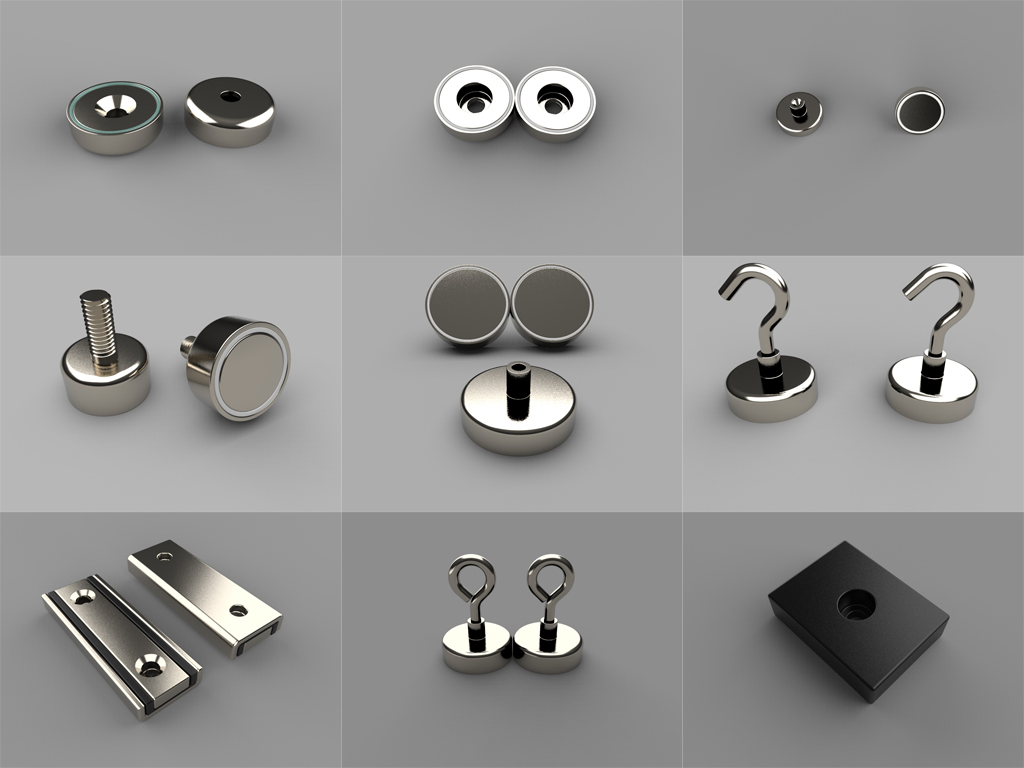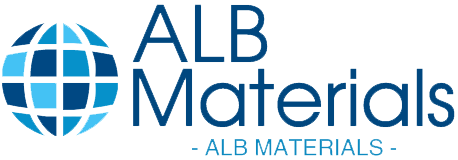In the world of industrial applications, where efficiency and flexibility are paramount, mounting magnets stand out as indispensable tools for securely attaching objects to metal surfaces. These versatile magnets offer a simple, non-destructive, and reliable means of mounting signage, fixtures, equipment, and more, without the need for drilling, welding, or permanent installation methods. In this comprehensive guide, we delve into the world of mounting magnets, exploring their various types, applications, benefits, and considerations.
Mounting magnets, also known as fixing magnets, are permanent magnets specifically designed for mounting or fixing objects onto metal surfaces. Unlike traditional fastening methods that require screws, bolts, or adhesives, mounting magnets provide a convenient and reversible solution that eliminates the need for tools or structural modifications.
- Types of Mounting Magnets
Mounting magnets come in a variety of shapes, sizes, and configurations to suit different mounting requirements. Some common types of mounting magnets include:
Pot Magnets: Pot magnets consist of a ferromagnetic steel cup or pot encasing a magnet. The steel cup concentrates the magnetic field, increasing the magnet's strength and providing a flat surface for mounting. Pot magnets often feature a countersunk hole or threaded stud for easy attachment.
Hook Magnets: Hook magnets are equipped with a hook or loop attachment that allows them to hang objects securely from metal surfaces. These magnets are commonly used for hanging signs, banners, lights, tools, and other items.
Disc Magnets with Countersunk Holes: Disc magnets feature a flat, disc-shaped design with a countersunk hole in the center. This configuration allows for easy attachment using a screw or bolt, providing a flush mounting surface.
Magnetic Bases: Magnetic bases consist of a powerful magnet encased in a steel housing with a threaded hole or stud for attachment. They are commonly used in industrial settings to secure equipment, fixtures, and machinery to metal surfaces.
Channel Magnets: Channel magnets are designed with a groove or channel on one side, allowing them to slide onto metal surfaces and provide secure horizontal or vertical mounting.
- Applications of Mounting Magnets
Mounting magnets find applications across various industries and settings, thanks to their versatility and ease of use. Some common applications include:
Signage: Mounting magnets are widely used for attaching signage, banners, posters, and displays to metal surfaces, both indoors and outdoors. They provide a quick and convenient solution for temporary or semi-permanent signage installations.
Fixtures and Equipment: In industrial and commercial settings, mounting magnets are used to secure fixtures, equipment, tools, and accessories to metal walls, ceilings, floors, and machinery. They offer flexibility for repositioning and adjusting equipment as needed.
Lighting: Mounting magnets are utilized in lighting applications to mount light fixtures, lamps, LEDs, and lighting controls to metal surfaces. They allow for easy installation and adjustment of lighting fixtures without the need for drilling or wiring.
Retail and Exhibition: In retail environments, mounting magnets are used for displaying merchandise, product signage, and promotional materials on metal shelves, racks, and fixtures. They provide a versatile and non-intrusive solution for merchandising displays.
Automotive: Mounting magnets are employed in automotive applications for securing accessories, tools, and equipment to vehicles, such as attaching antennas, lights, GPS devices, and license plates to metal surfaces.
- Benefits of Mounting Magnets
Mounting magnets offer several advantages over traditional fastening methods:
Ease of Installation: Mounting magnets can be quickly and easily installed without the need for drilling, screwing, or adhesive application, saving time and labor.
Versatility: Mounting magnets are versatile and can be repositioned, removed, and reused multiple times without leaving behind marks or damage.
Non-Destructive: Mounting magnets provide a non-destructive mounting solution that does not compromise the integrity of the mounting surface.
Strong Holding Force: Despite their compact size, mounting magnets offer strong holding forces, ensuring secure attachment of objects to metal surfaces.
Temporary or Semi-Permanent: Mounting magnets allow for temporary or semi-permanent mounting, making them suitable for both short-term and long-term applications.
- Considerations for Using Mounting Magnets
While mounting magnets offer numerous benefits, there are some considerations to keep in mind when using them:
Magnetic Strength: Choose mounting magnets with sufficient magnetic strength to support the weight of the objects being mounted.
Surface Condition: Ensure that the mounting surface is clean, flat, and free from debris or contaminants to maximize the holding force of the magnets.
Temperature Sensitivity: Some mounting magnets may lose their magnetic strength at high temperatures, so consider the operating temperature range when selecting magnets for specific applications.
Environmental Factors: Consider environmental factors such as humidity, moisture, and exposure to chemicals or corrosive substances that may affect the performance and longevity of mounting magnets.
Explore Our Neodymium Magnets
ALB Materials Inc is a leading manufacturer and wholesaler of Neodymium Magnets. Our extensive range of neodymium magnets, available in different grades, is utilized in various fields, including loudspeakers, wind turbines, mechanical devices, and medical equipment. We take pride in our competitive pricing, timely delivery, and exceptional customer service. For more information and to explore our products, visit our homepage.
